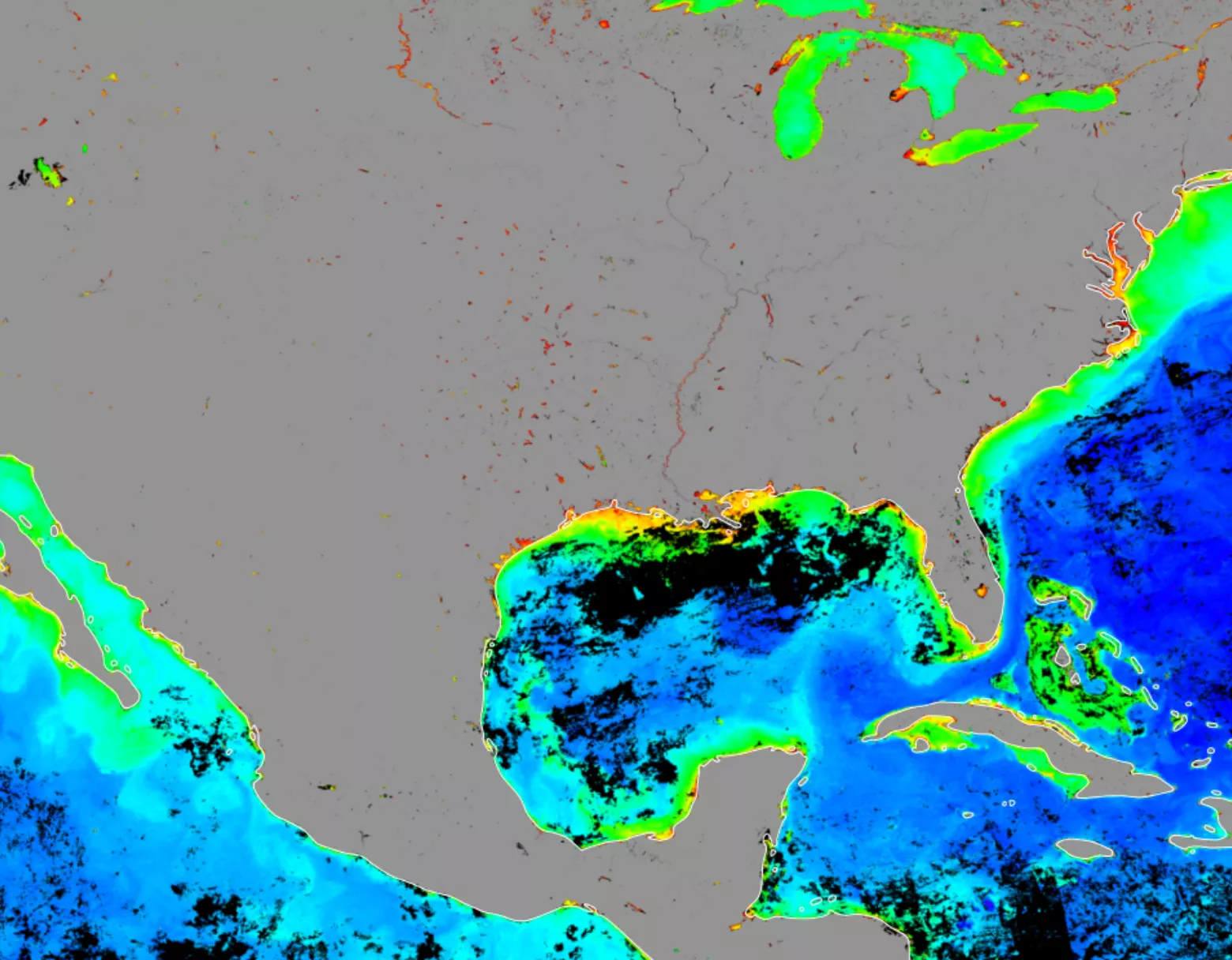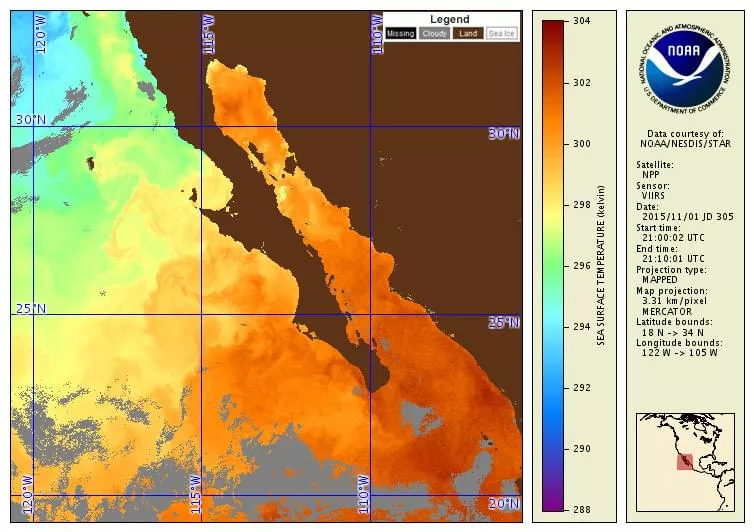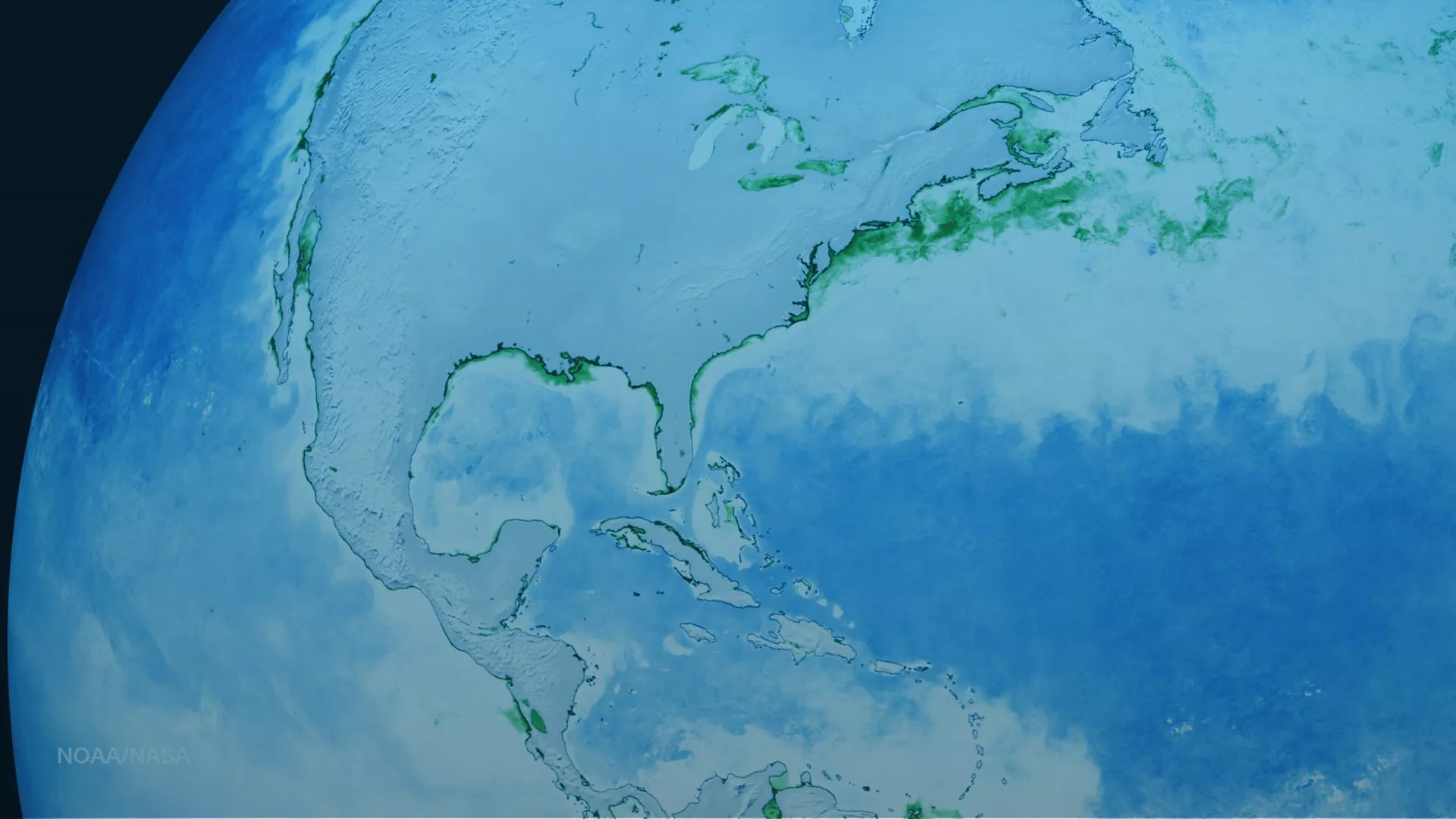Ocean & Coastal Initiative
Fathoming Our Oceans
All life on Earth evolved from its oceans. The first organic molecules bubbled out of the primordial soup, birthing our aquatic ancestors billions of years ago. In the grand scheme of the universe, it's been only the blink of an eye since animals crawled and gulped their way onto the land.
Image: Average global phytoplankton concentration for the month of May 2015 using data from the Suomi NPP satellite’s VIIRS instrument.
Threats to Oceans and Coastal Regions
Today, humanity still holds a special relationship with Earth’s oceans, seas, bays, and coastlines. These delicate ecosystems provide us with sustenance, recreation, and biodiversity. However, human tampering, climate change, and unforeseen disasters may threaten these ecosystems, endangering vital industries or unique species.
As an example, hypoxia, a water condition where oxygen levels drop low enough to stress marine life, threatens the health of the Chesapeake Bay in Maryland. Human interference in the marine ecosystem, particularly the addition of nitrogen and phosphorous into the environment, causes algal blooms that decompose and can deplete the surrounding area of life-giving oxygen. The resultant dead zones are on the rise and must be better understood and predicted in order to ensure a healthy bay ecosystem for Maryland staples like the callinectes sapidus, more popularly known as the Chesapeake blue crab. These kinds of harmful algal blooms have been reported all over the US and the world.
This NOAA-20 image from the VIIRS instrument shows ocean color, including chlorophyll, around the southern U.S. coastal regions in July 2019.


Preserving Marine Ecosystems
Human interference in the marine ecosystem, particularly the addition of nitrogen and phosphorous into the environment, causes algal blooms that decompose and can deplete the surrounding area of life-giving oxygen. The resultant dead zones are on the rise and must be better understood and predicted in order to ensure a healthy bay ecosystem for Maryland staples like the callinectes sapidus, more popularly known as the Chesapeake blue crab. These kinds of harmful algal blooms have been reported all over the US and the world.
The Ocean & Coastal Initiative endeavors to preserve marine ecosystems like the Chesapeake Bay through the applications of JPSS data products. The initiative shares oceanic insights with offices of the National Oceanic and Atmospheric Administration (NOAA), external agencies, and international collaborators, ensuring the widest possible usage of the data.
Access Ocean & Coastal Initiative Data Products
JPSS Imagery is available through the NOAA View website, an interactive software portal to visualize NOAA’s weather and environmental satellite data. There is also more information about how to download this data.

